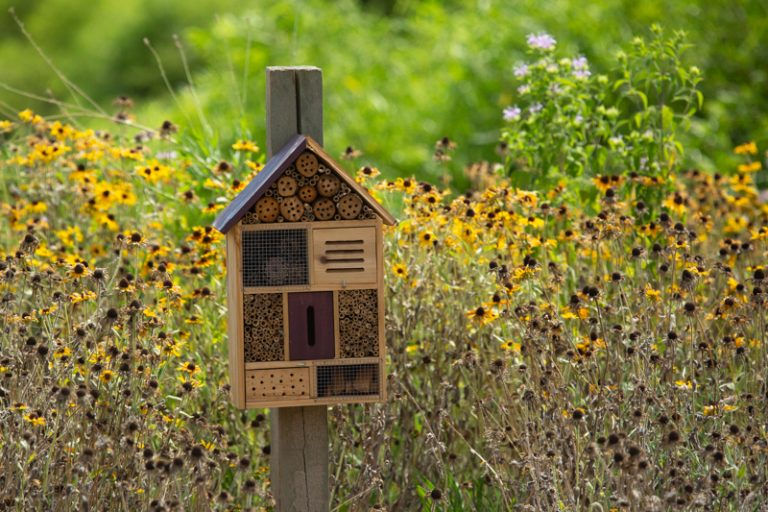9 Ideas to Create a Pollination Oasis
- David Burrows

- Dec 12, 2023
- 3 min read
It may be freezing where you are but Spring is coming soon! Now is the time to think and plan for attracting pollinators to your backyard. Pollinators enhance biodiversity, promote healthy ecosystems, and improve the overall health of your garden and surrounding areas. So, let’s get into it! Here are 9 tips to attract various pollinating species to your backyard!

Plant a Variety of Flowers:
One of the easiest and most beautiful garden task is to plant a variety of flowers with different colors, shapes. Most importantly, plant different speices which spread bloom times throughout the growing seasons. This will help provide a continuous supply of nectar and pollen from early spring to late fall. See local wildflower seed selections for a great mix.
Select Native Plants:

Each region has its collection of native plants that are well-adapted to local pollinators. Matching plant species to the indigenous pollinators will provide a familiar and reliable food source for native bees, butterflies, and other pollinators. It also helps control spread of diseases and invasive species providing a healthy ecosystem for everyone.
Provide Water Sources:

Summer months are particularly important for providing water to bees, butterflies, bats, and hummingbirds. Set up a shallow container with fresh water in your garden. This helps not only for drinking but also for other activities like mud-puddling and nest building materials. Insert a small floating solar-powered water pump and keep the water fresh and mosquito-free. Place rocks or other features in the water to provide landing spots so that bees and butterflies won’t drown!
Avoid Pesticides & Minimize Fertilizers:
Pesticides of all types are deadly to our fragile pollinators – especially bees and butterflies. Minimize or eliminate the use of pesticides and herbicides in your garden where possible. Pesticides also have a negative impact on humans as well – especially when growing food crops. Most pesticides are linked to cancers and autoimmune issues.
There are multiple natural solutions where nature can help us keep our environment in a healthy balance. Some ideas are Lady Bugs and Lacewings for aphid control. Use mulch from your food and leaf waste to create healthier soils and encourage helpful fungi which provides nutrients to plants, pollinators and you!
Create Habitat and Nesting Sites:

Your garden’s habitat is key to attracting and keeping pollinators. Set up nesting sites for native bees, such as bee houses, or bundles of hollow stems and pine cones or bamboo shoots. Also, butterflies love their own comfy slit-style houses featuring a colorful entrance.
Different species of bees have different nesting preferences as well as butterflies, birds, and bats. Providing housing for these varies species will ensure they stay around to keep pollinating and will provide a safe space to reproduce and increase their populations in your general area.
Plant for Caterpillars:
Caterpillars hatch and feed on various plants like Milkweed (for Monarchs). Other plants that will attract butterflies include: Buckwheat, Cudweed, Dragon Sagebrush, Parsley, Dill, and Fennel – which you can eat as well! Different butterfly species lay their eggs on these specific plants and hosting these plants will support the complete life cycle of different species from egg, to caterpillar to butterfly.
Provide Sun and Shade:
Much like us humans, pollinators like a mix of sun and shade. Creating a combination of sunny and shady areas in your garden is very helpful during hot summer months. Different pollinators have different preferences for sunlight and having a variety of conditions will attract a more diverse range of species. Be sure to place your pollinator habitats in both sunny and shaded locations as well. For instance, bats perfer evening sunlight while bees prefer early morning light.
Consider Fragrance:

Mmm, is that lavender I smell? Many pollinators are attracted by scent along with colors. Planting fragrant flowers will attract bees and butterflies that rely on their sense of smell. Some flowering plants for this include: Black-eyed Susan, Milkweed, Salvia, Lantana, Coneflower, Echinacea, Goldenrod, Zinnia, Marigolds, Phlox, and Aster. Select an heirloom mix of good wildflower seeds which will contain most of these species as well!
Be Patient:
When it comes to nature, patience is key. It will take time for pollinators to discover your garden. Some may appear within a day, others may take weeks, and some may not come until the following year. Nature is wild so be patient and allow your garden to establish itself as a welcoming habitat. Build it and they will come is a true statement!
By featuring all these different practices, you will create a pollinator-friendly environment in your backyard, garden, or even balcony, that can support the health of local ecosystems. Plus, you’ll get to enjoy the beauty of a diverse plant and insect life environment right outside your windows.
Please visit our online store and consider purchasing items to help you create a more beautiful and healthier environment. Each purchase also helps us do more nonprofit projects for parks, schools, and community gardens! :-)



Comments